By Christopher Miskimon
Columns of smoke rose above the skyline around a Tunisian farming complex on February 28, 1943, wafting past the late afternoon sun through atmosphere punctuated by the crack of bullets, booming explosions and the screams of wounded men.
Some of that smoke poured from the burning hulks of Churchill tanks belonging to A Squadron, 51 Royal Tank Regiment of the British First Army. Major E. W. H. Hadfield commanded that squadron, a unit decimated by a line of German anti-tank guns hidden on the other side of a wadi his tanks could not cross. The only way over was a fire-swept causeway fully under German observation. Worse still, Hadfield had orders to send his force to take the high ground beyond that causeway.
It seemed like a suicide mission, so Hadfield made a decision. He ordered only his most advanced tank troop ahead. There was just one problem. That troop, normally equivalent to an American platoon of five tanks, consisted of but a single tank and its crew, commanded by a Captain Ernest Hollands. He thought he might be sending Hollands and his men to their possible deaths. Instead, Hollands would set off on a rampage through enemy lines.
World War II in North Africa was gradually winding down to its dreadful conclusion by February 1943, but it was hard to tell by watching the German Army. Inexorably pushed back into an ever-smaller piece of northeastern Tunisia, the remnants of the once proud Africa Korps conducted stiff defensive actions punctuated with counterattacks to prevent the advancing Allied armies from overrunning them. A combined Anglo-American force attacked from the west while the British Eighth Army came from the south after pushing the Germans out of Egypt and then Libya over the preceding months.
Fast counterattacks while on the defensive were a hallmark of German tactics. Operation Ochsenkopf (Ox head), an offensive to wrest control of key terrain in northwestern Tunisia, began on February 26, 1943, as the British First Army advanced through this area. The Germans initiated a series of eight attacks in an overconfident attempt to reverse Axis fortunes in a campaign which was nearly over. Still, the battle-hardened Germans were dangerous opponents who refused to concede their losing position.
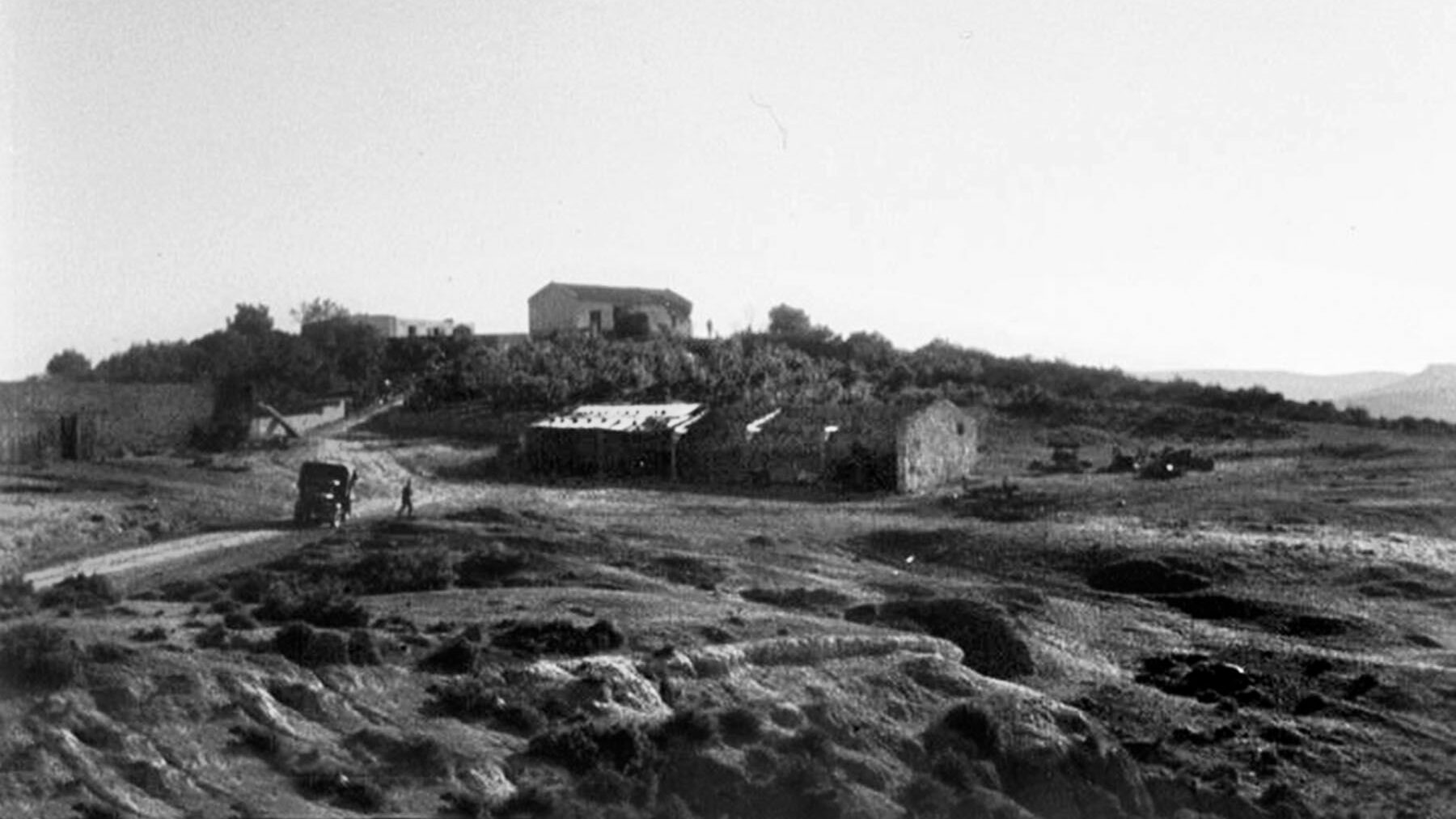
The German plan called for Korpsgruppe Weber, consisting of the 334th Infantry Division and elements of the 10th Panzer and Hermann Goring Divisions, to advance in three columns on several objectives, force the Allies back, and disrupt their offensive operations. If successful, it might buy time and deal the British a hard blow, much as the attack at Kasserine Pass had done to the still-inexperienced U.S. Army a week earlier.
On February 27, one of these attacks cut the road between the towns of El Aroussa and Medjez el Bab, less than 40 miles southwest of Tunis. The area is mountainous, but generally open with few trees, allowing observation from high ground. A road network winds through various passes between the mountains, connecting the scattered towns and villages throughout the region. Farms and orchards are commonplace around and between the towns.
A composite British force, designated Y Division, held this area. This unit was a mix of infantry, tank, and artillery detachments which only existed for perhaps a month in February-March 1943. A few different units were alternately attached to and detached from it during its brief history. Little is known about Y Division as few records survived. It was apparently a scratch force, but several sources state it was commanded at this point by Brigadier Nelson Russell, an Irish Officer who also commanded 38 Infantry Brigade in North Africa.
Early that morning a German column including a tank platoon and infantry mounted in trucks moved down the road. They met a small British unit which fought a delaying action before being forced back. As the British formation fell back to El Aroussa, it ran into the North Irish Horse, an advance unit of 25 Tank Brigade. Brigadier Russell took control of one of its squadrons, equipped with Churchill tanks, and deployed them just north of the town, directly in the path of the oncoming Germans. When the Axis column appeared around a bend in the road, the Churchills opened fire, quickly destroying two tanks and a pair of trucks. The rest of the Germans hastily retreated several miles to the first defensible position they could find.
This position bore the moniker of Steamroller Farm, a large agricultural complex north of El Aroussa. British troops nicknamed it for the large steamroller which sat prominently near the farm buildings. Beyond the farm sat the summit of a pass leading toward Medjez al Bab. The Germans dug in there, and soon reinforcements arrived. The British stopped some four and a half miles south of the farm. Brigadier Russell needed to know how many Germans defended the farm and the pass beyond. Fearing the Germans might already be there in strength, he ordered a reconnaissance in force for the next morning.
The reconnaissance force included a company of infantry from the 2nd Coldstream Guards, A Squadron of 51 Royal Tank Regiment (51 RTR), and a troop of field artillery with 25-pounder guns. The 51 RTR, also known as the Leeds Rifles, was an armored regiment of the territorial army, the reserve component of the British Army and roughly analogous to the U.S. National Guard. Originally raised as an infantry unit, it was converted to an armored regiment in 1938-39 as Great Britain prepared for the coming war. The War Office subsequently assigned them to 25 Tank Brigade. When the British Expeditionary Force went to France in 1939-40, this brigade converted to armored cars and went with them. When the regiment later reformed it received a proper tank, the Churchill.
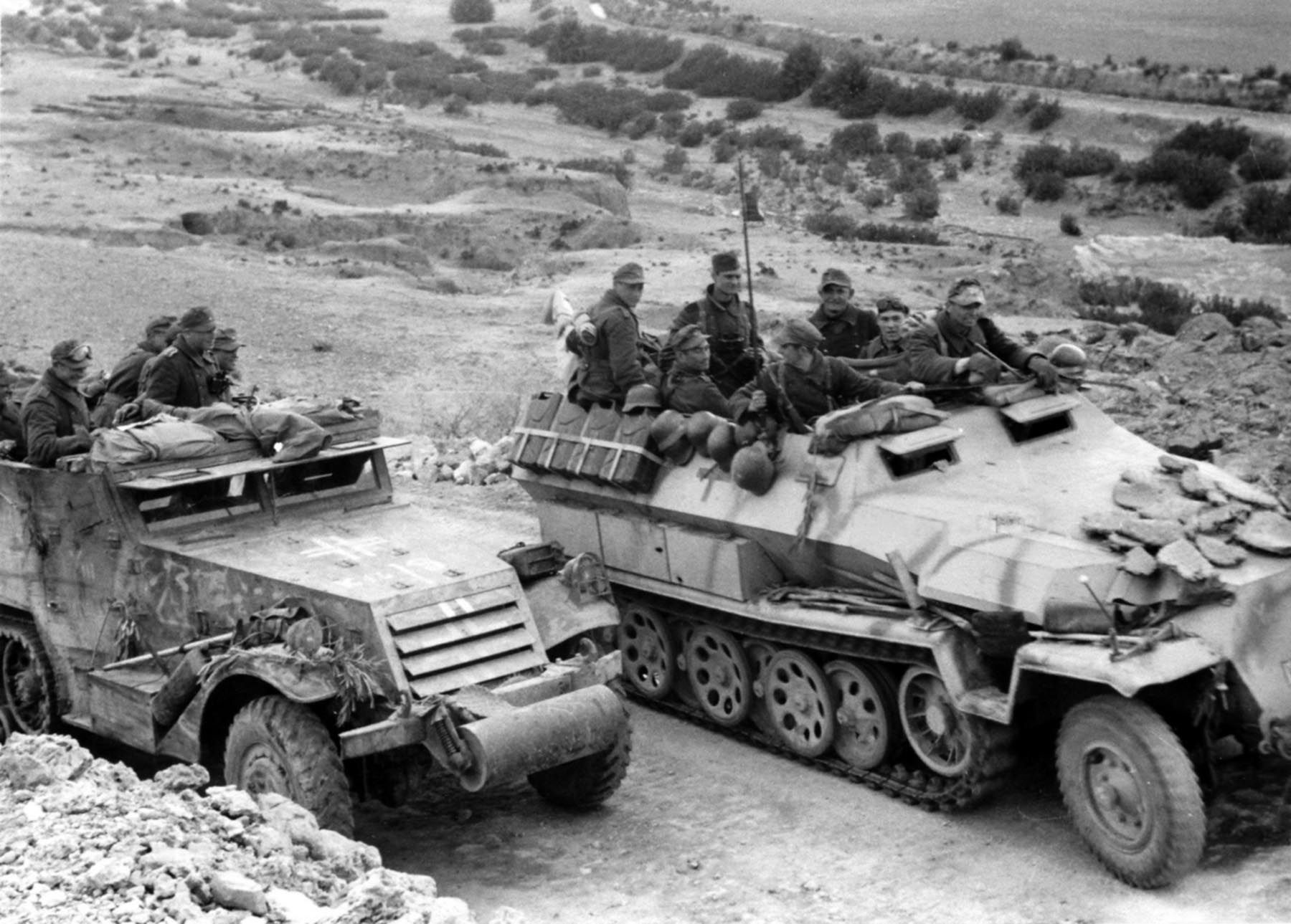
British tank design settled on three main types: light tanks for scouting, cruiser tanks as fast, mobile fighting vehicles, and infantry tanks, designed as slower, heavily armored vehicles intended to support infantry formations with heavy firepower. The Churchill was an infantry tank, 24 feet, five inches long, 10 feet, eight inches wide, and eight feet high. It carried four inches of frontal hull armor and three inches on the hull side, comparable to the German Tiger. All this armor made the tank heavy at over 39 tons. The Churchill’s 350-horsepower, 12-cylinder engine could push the tank to only 15.5 miles per hour on roads; cross country, top speed dropped to eight miles per hour. The Churchill was large, slow, and ponderous, but well-armored and tough. Stories abound of Churchills taking numerous hits from anti-tank guns and continuing to function.
When 51 RTR sailed for North Africa on January 20, 1943, 52 of its 60 Churchills were Mark IIIs and IVs, a model which carried the 6-pounder cannon. This gun, a version of the 57mm anti-tank gun used by the U.S. Army, proved markedly better than the obsolete 2-pounder (40mm) it replaced. The big Churchill carried 84 rounds of ammunition for its main gun. The 6-pounder could penetrate up to 81mm (3.19 inches) of 30-degree sloped armor at 500 yards. The tank also toted a pair of 7.92mm Besa machine guns, one coaxial to the main gun and a second in the front hull. At this point only armor-piercing ammunition was available for 51 RTR’s 6-pounders; they lacked high-explosive rounds, more useful against soft targets like anti-tank guns and infantry. Engaging such targets required bursts of machine-gun fire or very accurate shooting with the cannon. A crew of five operated the tank: commander, gunner, loader/radio operator, driver, and a co-driver who also fired the hull machine gun.
The regiment landed at Bône on February 2 after losing one of their transports, which carried 19 of their tanks. They undertook defensive missions until A Squadron went forward on the 28th for the reconnaissance of Steamroller Farm, where the regiment would fight its first real action—proving in equal measures costly and brilliant.
At 10:30 p.m. on February 27, Major Hadfield received orders to report to the commander of the 2nd Battalion Coldstream Guards for the reconnaissance mission. He was told only that division command was “concerned about the valley north of El Aroussa as a result of previous action and wished a recce [reconnaissance] in force from El Aroussa up to the farm…to find what German tanks were in the valley and to clear up any enemy infantry in the gullies.”
Upon arriving at El Aroussa, Hadfield learned no information was available on the terrain or enemy positions. No infantry patrols went out earlier that day or would go out that night. Some men from other tank units in El Aroussa filled him in on what little they saw of the ground before sunset. Hadfield also learned he would command the scouting force. He had four troops (platoons in U.S. parlance) in his squadron, each with two or three operational Churchills, for a total of 13 tanks. In A Squadron, each tank had a name beginning with the letter “A.” The infantry company would ride on the tanks; both the infantry and armor used the same radio nets, to facilitate communication. Another company of infantry remained behind in reserve. A small detachment of Royal Engineers went along to clear mines. Hadfield also had the services of a forward observer to control the fires of the 25-pounder artillery. The observer rode in an armored car to stay close to the commander.
When he issued the written order for the mission, Hadfield gave his men what little he knew of the Germans: “Enemy positions not known in detail but infantry and few tanks with two or three a/tk [anti-tank] guns believed to be on ridge beyond Farm.”
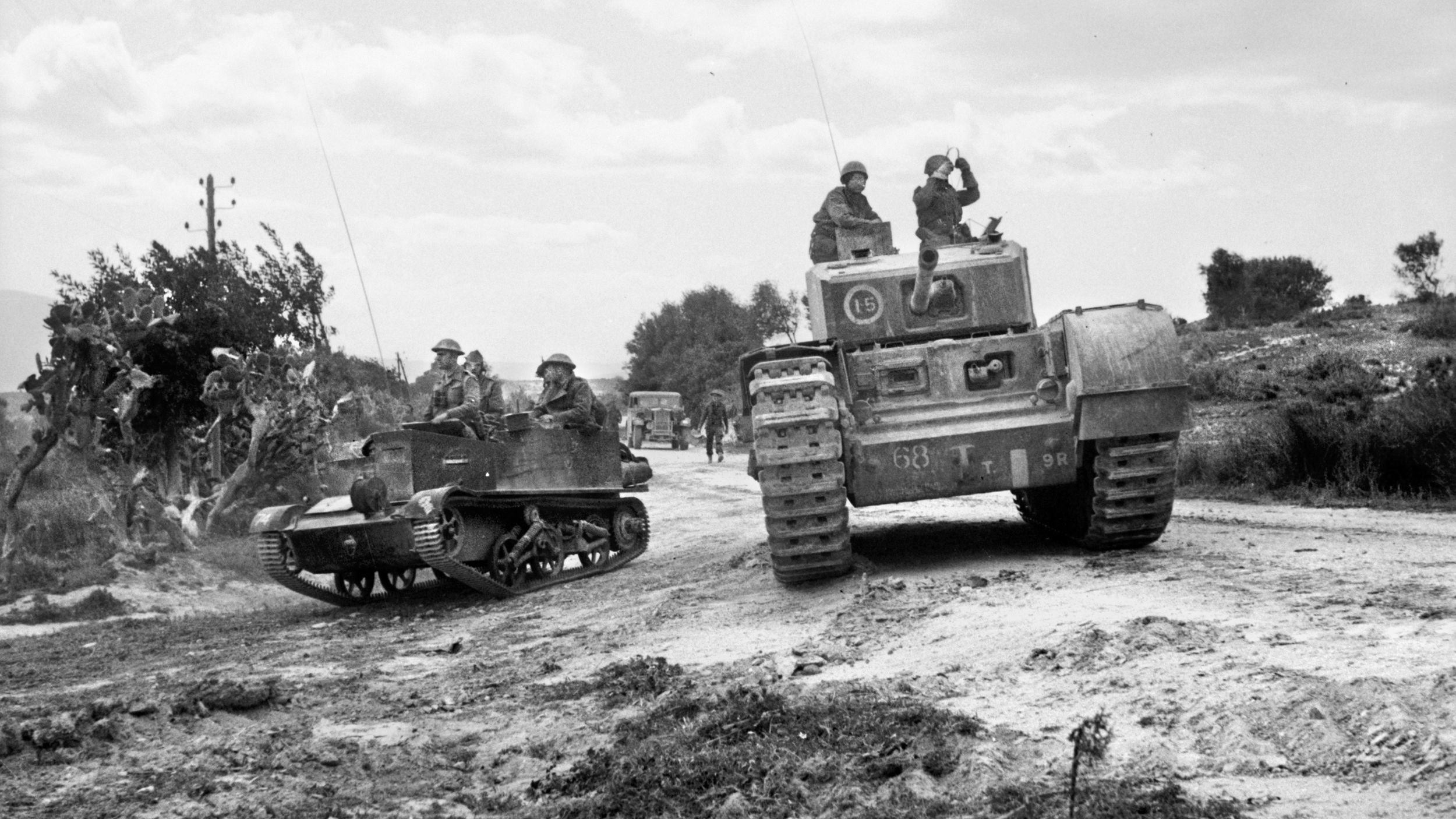
Hadfield could not know the Steamroller Farm position was actually defended by two battalions of the Hermann Goring Division, supported by elements of a panzergrenadier regiment equipped with numerous anti-tank guns. Parts of the Hermann Goering appeared late in the North African campaign to shore up the failing Axis defense, leading to units being committed piecemeal as they arrived. However, the German Army frequently formed ad hoc battlegroups, known as kampfgruppen, for specific missions and had experience doing so.
The British reconnaissance force got under way at 11 a.m. on February 28. Unsure of the enemy dispositions and lacking even knowledge of the terrain beyond what his maps showed, Hadfield proceeded slowly and methodically. The Germans were masters of the ambush, so he set up tanks in overwatch positions to cover the ones moving forward. Five hours later they reached the farm without encountering the enemy. The road bottlenecked near the farm with rough ground around it. Hadfield knew the site was a likely defensive position and deployed his force accordingly.
He sent 2 and 3 Troops (five tanks) to his left flank, avoiding the bad ground. The other two Troops, 1 and 4, moved below the farm and took up hull down positions (only their turrets exposed) so they could provide supporting fire to the infantry when they approached the farm. Shortly after, Hadfield called on 1 Troop (two tanks) to move up the road toward the farm, as this was the only route tanks could use, and to be ready to fire on any enemy infantry or anti-tank guns they found. At the same time, he moved 4 Troop to the right, though not forward, so it could support 1 Troop.
Captain Darrel Ernest Hollands commanded 1 Troop. Known to the men of 51 RTR by the nickname “Gin,” Hollands had a reputation for being physically brave. Born in India in 1912, he enlisted in the Royal Sussex Regiment at Karachi in January 1931. When the regiment went back to England, he went with them. After his enlistment expired, he joined the Bath City Police in 1937. When the war started in 1939, he was called back to service, again with the Royal Sussex.
Hollands went to France with the British Expeditionary Force. While at Dunkirk in 1940, he rescued a downed German pilot from his crashed plane, earning a Distinguished Conduct Medal for his actions. After returning to England, he received a commission into the Royal Tank Regiment, where he was assigned to A Squadron, 51 RTR. Now he led a pair of Churchill tanks up a road toward Steamroller Farm, seeking out an enemy he knew had to be there. His own tank bore the name “Adventurer.”
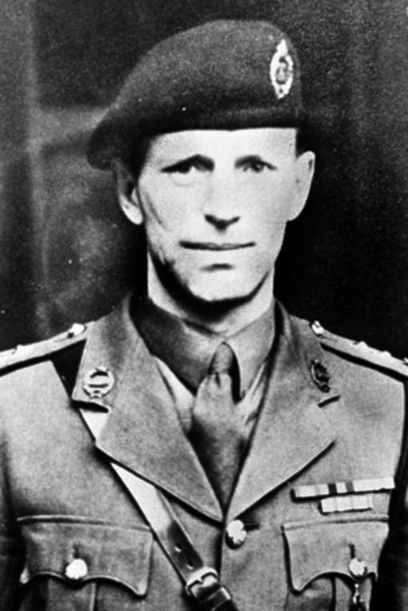
As 1 Troop’s tanks rolled slowly uphill, they spotted several anti-tank guns hidden in the gullies around them. Both tanks opened fire, shooting up the guns and their crews, forcing them to take cover away from their weapons. Soon after, the infantry company caught up with the tanks and stood by as all the tanks in the squadron fired on the farm buildings to suppress any enemy soldiers there. Afterward, the infantry advanced to the farm buildings and reported them clear. Hadfield had his doubts about that, so he ordered 2 and 3 Troops to advance through the farm and, if possible, to the ridge beyond.
The clank of the Churchills’ tracks mixed with the roar of their Bedford engines as they advanced toward Steamroller Farm. As they neared the buildings, the Germans struck. A squadron of Junkers Ju-87 Stuka dive bombers commenced dive-bombing the British tanks. As they did, multiple anti-tank guns opened fire from hidden positions; at least one of them a dreaded 88mm with the firepower to penetrated even a Churchill’s thick armor. The anti-tank guns sheltered behind a deep wadi, separating them from their prey. The air around Steamroller Farm was thick with the crack of projectiles flying at supersonic speeds, the flash of tracer bullets from machine guns searching out human flesh, and the howling whine of the Stukas as they dove on the hapless British at steep angles, pointing their aircraft to aim their bombs.
Tank drivers maneuvered their vehicles to make the enemy gunners’ jobs more difficult, but the Churchills were big, slow targets. A bomb exploded next to a tank named “Asp,” blowing off one of its tracks and disabling it. Another Stuka pilot dropped a bomb which hit the tank directly on the side engine door. This hit blasted the heavy steel door off its hinges and tore it into four pieces. The explosion smashed the rear of the engine, ruining any hope getting it back into action quickly.
A second tank, “Amazon,” also fell prey to the diving Stukas. A near hit blew a track off, leaving it static, easy prey for the German gunners on the ground. The crew of a 75mm gun focused on Amazon; the gunner put a 75mm round through the rear hull. The projectile went through the gearbox and fan and into the gearbox bulkhead, causing it to ricochet through the rear carburetors and lodge in another carburetor, starting a fire. Anti-tank gunfire disabled two other Churchills as well, including Captain Hollands’ second vehicle, leaving Adventurer as the only operational tank in 1 Troop. The tankers did not sit idly awaiting destruction—their accurate fire silenced several of the German anti-tank guns and blasted several mortar positions. For the moment, the action stalemated, the smoky field covered by a fragile silence.
Hadfield contacted Y Division headquarters and advised them of the situation. A field commander in his position might hope for support—an air strike, reinforcing artillery or more troops and tanks. This time, Hadfield received only an order. He was to advance through the farm and take the high ground beyond “at all costs.” Possession of that ridgeline would allow the British to dominate the area. Also, the British 56 Reconnaissance Regiment maneuvered to the north, working its way south toward Hadfield’s area; if he held the high ground the two units could link up and perhaps force the Germans to withdraw from a now untenable position.
Hadfield felt he had to obey the order; it was not unreasonable given Y Division’s view of the situation. Still, after the short battle, fully one-third of his tanks were already out of action. Only nine Churchills remained to make the attempt against a German anti-tank screen of unknown strength. He believed if he committed his entire remaining force, he might very well lose them all. He settled on a compromise; send 1 Troop forward to try for the high ground and preserve the rest of his squadron for whatever came next. The decision was not fair to Hollands, but it would spare the rest of Hadfield’s tank crews the risk of death. In the brutal logic of war, it made sense. Hadfield gave the order for 1 Troop’s advance, but in the chaos of battle he forgot Hollands’ other tank was knocked out in the recent fight. Hollands and his crew were going in alone.
In the commander’s hatch of Adventurer, Captain Hollands received the order to advance. Though it might seem incredible, he followed Hadfield’s instruction without complaint, ready to do as much damage as his single tank could. He ordered his driver, Trooper John Mitton, to move forward. After a short distance, Hollands discovered his way blocked by the wadi. The only way across was to get to the road on their right, which had a causeway going over it. Hollands told Mitton to reverse, guiding him as the driver backed the tank to a spot where it could turn and head for the road. The crew tried to keep the thick front armor of Adventurer between them and the armor-piercing shells which soared past them, filling the air with a cracking snap as the supersonic projectiles went by.
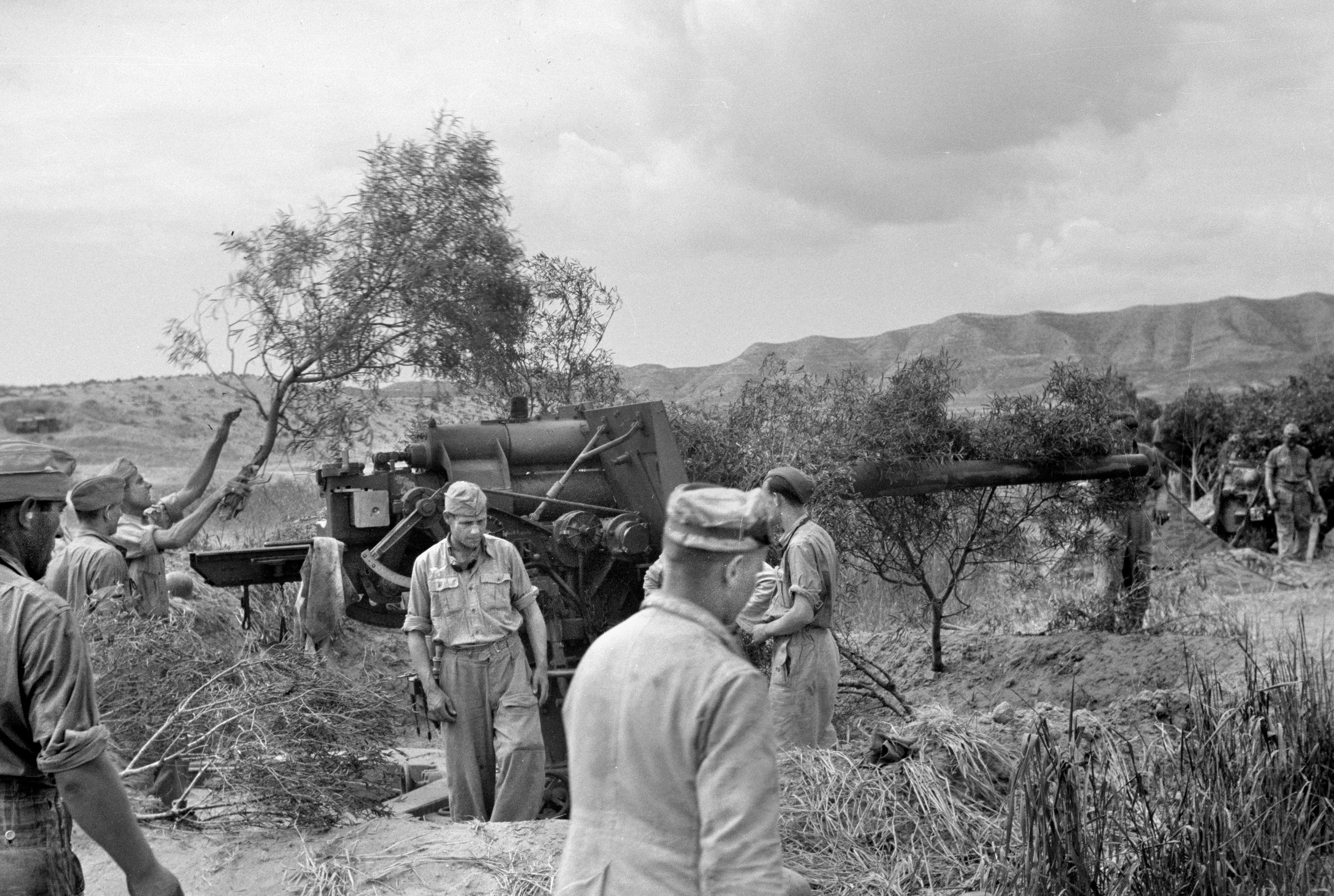
Finally, the Churchill reached a point where it could be turned to move to the road. The engine revved as Mitton put it into forward gear and got moving again. The thinner side armor was now exposed to the Germans, but luck was with the British crew. Bushes and more scrub brush blocked the German gunners’ view of the tank. They continued to fire, but their shots went wide; none of them found their mark in the tank’s side plates. Hollands ordered a left turn when they reached the road, putting the frontal armor toward the enemy and pointing straight at the ridge beyond the farm. The tank crawled forward, the crew alert.
The road curved ahead at a point where the concealing vegetation ended. Adventurer reached the bend and kept going—straight at an 88mm gun set up near the entry road for the farm. The cannon sat barely 30 yards away, point-blank range; even the Churchill’s thick armor would not protect it from the penetrating power of an 88mm so close by. Mitton brought the tank to a fast stop to allow his gunner the best chance of hitting the German gun.
It worked; 6-pounder shot and machine-gun fire wrecked the German gun before its crew could fire. Luck seemed to be with Hollands and his crew that afternoon. Most of the enemy seemed to be around Steamroller Farm, now almost immediately to Hollands’ left. He ordered the turret traversed in that direction as Adventurer drove forward again, the road angling upward to the high ground as they fired at targets of opportunity.
The tank continued until Mitton came upon a barrier across the road made of branches and vegetation, blocking his view. Suddenly, the crew realized the barrier was actually concealing camouflage for another 88mm gun. With the turret turned to the left, the gunner couldn’t fire on it. By chance the hull machine gunner, Trooper Hank Howsen, was reloading his Besa machine gun. The crew of the 88 lacked any such impairment, and their gunner fired. The muzzle flash of the powerful German cannon obscured its gaping muzzle, and the report sounded like a thunderbolt as the armor-piercing round crossed the short distance in a fraction of a second. It struck high on the tank’s turret, gouging a deep furrow along it. The small casing housing the extractor fan, which pulled the cannon fumes out of the tank after it fired, was ripped off and the top of the turret’s rear stowage bin was smashed in by the impact. But the crew’s luck held—they were unharmed and the tank was still operational.
Howsen toiled with a fresh belt of ammunition for his machine gun as the gunner tried to slew the turret to the right to line up on the 88 for a killing shot, but the turret refused to move. During the fighting a 6-pounder round had come loose from the ammunition rack and now blocked the turret’s traversing gear, jamming it completely. The gunner worked to free the obstruction as Hollands reached for his Thompson submachine gun and some hand grenades. The German gun crew meanwhile reloaded and fired again, the blast and flash from the cannon’s muzzle bellowing out what would surely be the death knell for the Adventurer. But this 88mm round missed completely.
Finally, Howsen was able to seat the new ammo belt into the feed tray of the Besa machine gun and close the cover. He took careful aim, pointing his weapon at the camouflage directly in front of the enemy gun, and let loose a burst. The crew of the 88 decided to end their point-blank engagement with the massive Churchill and fled as Mitton put the tank back into gear and rumbled forward. In the commander’s hatch, Hollands hurled several hand grenades at his now-fleeing enemy, followed up by bursts from the Thompson.
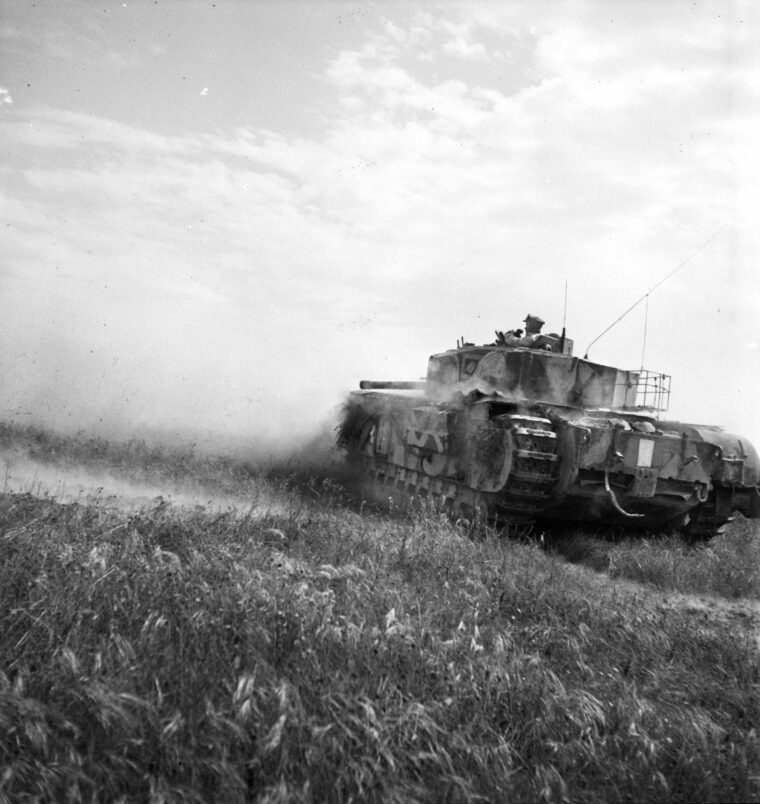
With the immediate threat gone, the crew cleared the jammed round from the turret traverse gear. At this point Hollands could have headed back. In the space of a few minutes his crew engaged and knocked out two 88mm guns, a weapon Allied tank crews particularly feared. Unknown enemy forces lay ahead; infantry and anti-tank guns for certain, and the chance for more enemy air attacks or even panzers could not be ruled out. The way ahead lay full of possibilities, almost all of them bad for a lone tank crew and their damaged vehicle.
Captain Hollands did not choose the easy option. He had his orders and would carry them out as best he and his men could, despite the odds. Even if their tank was knocked out, the crew killed, wounded, or captured, even a single tank could do extensive damage. Behind them, the rest of A Squadron was no doubt engaged in recovering their damaged and disabled Churchills and tending to their casualties. The infantrymen of the Coldstream Guards were working their way around to the left, trying to flank the Germans around Steamroller Farm. Every German soldier Hollands and his men could engage would be one less able to trouble their comrades. The only way was forward. The crew of Adventurer chose to face the odds, no matter how high. Besides, in the words of British historian Bryan Perrett, “Having twice survived sudden death by a whisker, Hollands was fighting mad.”
Adventurer rolled on, moving up the slope of the road toward the high ground. A short distance past the knocked out 88mm gun, Hollands spotted a piece of high ground near some pine trees to the left and decided to put his tank there. The tank left the road and headed straight for it. German slit trenches dotted the ground ahead of them, and Mitton drove the Churchill straight over them, crushing each under the treads of the 39-ton vehicle. Despite the tank’s slow cross-country speed, it soon crossed the few hundred yards to the high spot and ponderously climbed it, the Bedford engine revving loudly. Nearing the summit, Hollands saw an opportunity laid out before him.
On the opposite side of the road sat a large enemy vehicle laager. The slope and a spur in the terrain had prevented him from seeing it until they reached the high ground. Spread out before Hollands lay dozens of trucks, staff cars, radio cars, and even another 88mm gun with its towing tractor and ammunition. Perhaps three companies’ worth of infantry dotted the area, many in slit trenches like the ones Adventurer had just crushed under its treads. The young captain did not hesitate; he ordered his gunners to open fire.
Smoke and flame poured from Adventurer’s cannon as the gunner sent round after round of 6-pounder shot tearing into the unarmored vehicles and 88mm gun below. Howsen’s Besa machine gun chattered out long bursts, adding hundreds of 7.92mm rounds to the cacophony of sound and fury being unleashed on the surprised Germans. Vehicles burst into flame as their fuel or ammunition ignited. Troops scrambled for cover as deadly machine-gun fire swept back and forth across the battlefield. Within minutes 25 vehicles lay wrecked within the laager, many burning. New columns of smoke rose into the air from the flames.
Hollands now took stock of his situation. His crew had struck a hard blow against the German defenses, stripping them of a significant portion of their firepower and destroying both their transport and much of their ammunition and supplies, but the battle-hardened enemy was not out of the fight yet. Adventurer sat in the middle of a large number of German troops, still dug in and giving no sign of impending surrender or withdrawal. Hollands called Major Hadfield over the radio and asked to be reinforced quickly before the Germans could reorganize and strike back.
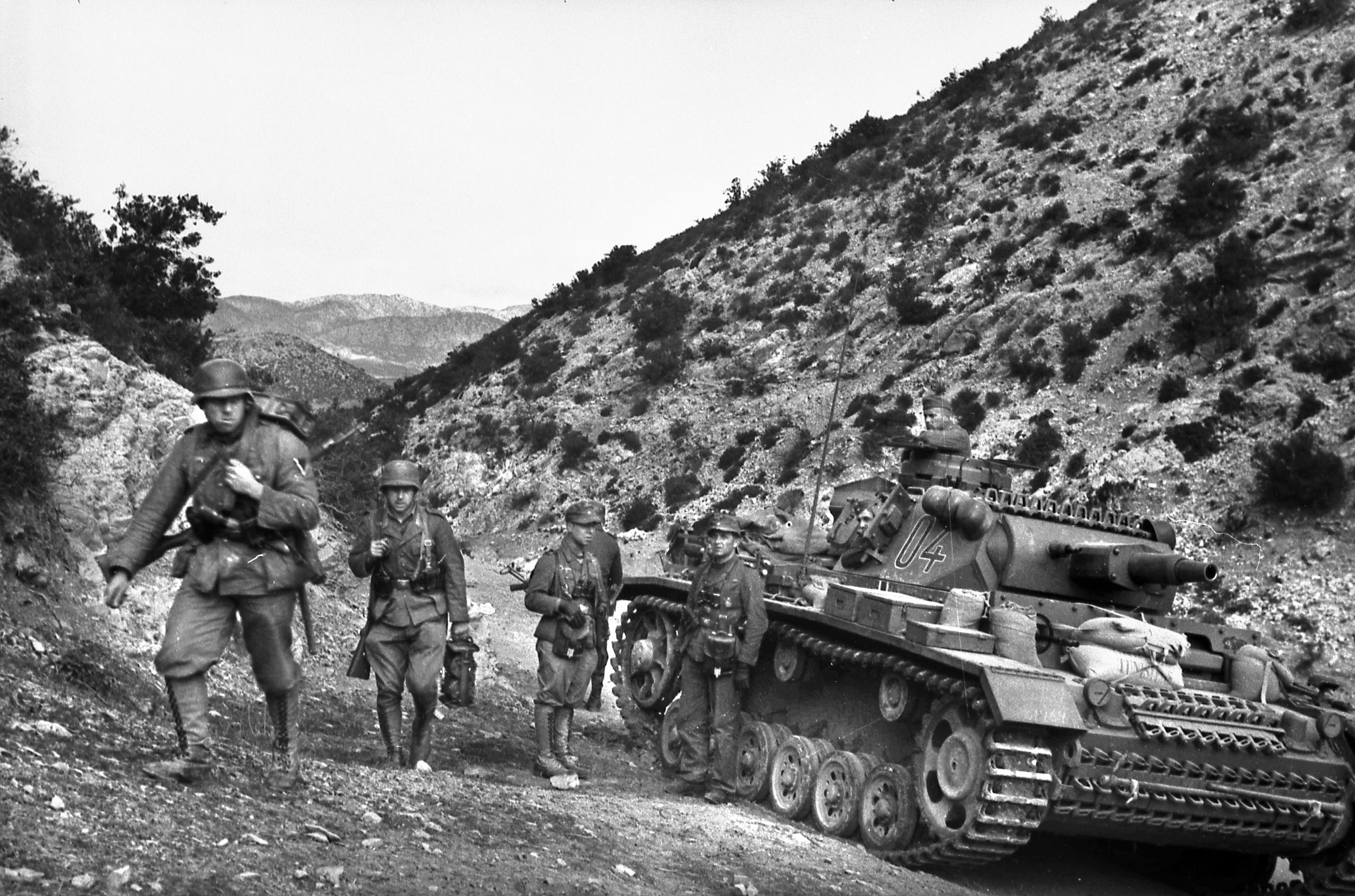 Hadfield had other problems, however. His task force of tanks and infantry were still engaged in the battle behind Hollands’ advanced position. All of 2 Troops’ tanks were knocked out, as well as the Churchill belonging to the squadron’s second in command. While Hollands focused on destroying the laager, German planes appeared overhead and dropped not only fresh supplies, but also paratroopers. It was clear the Germans intended to keep fighting for Steamroller Farm and its environs. Hadfield had little to spare from his beleaguered command. Still, he could not abandon Hollands entirely and ordered the only tank he could do without to rush to Hollands’ assistance. This was the Churchill of Lieutenant J. G. Renton, the squadron’s reconnaissance officer. Renton wasted no time and set out along Hollands’ route, taking the road past the knocked out 88s.
Hadfield had other problems, however. His task force of tanks and infantry were still engaged in the battle behind Hollands’ advanced position. All of 2 Troops’ tanks were knocked out, as well as the Churchill belonging to the squadron’s second in command. While Hollands focused on destroying the laager, German planes appeared overhead and dropped not only fresh supplies, but also paratroopers. It was clear the Germans intended to keep fighting for Steamroller Farm and its environs. Hadfield had little to spare from his beleaguered command. Still, he could not abandon Hollands entirely and ordered the only tank he could do without to rush to Hollands’ assistance. This was the Churchill of Lieutenant J. G. Renton, the squadron’s reconnaissance officer. Renton wasted no time and set out along Hollands’ route, taking the road past the knocked out 88s.
As the young reconnaissance officer hurried toward them, the crew of Adventurer fought a very determined German soldier. The German occupied a slit trench with a camouflage net perched above it. Over and over, he popped up from his covered position, fired a rifle grenade at the British tank, and then duck back down to reload. In response, the crew fired both their cannon and machine guns at the slit trench. Three 6-pounder armor-piercing rounds and two full belts of machine-gun ammunition—450 rounds—failed to stop the enemy soldier, who kept launching his rifle grenades one after another. Finally, the gunner took careful aim and fired another cannon shell into the ground just in front of the slit trench. An explosion roared from it; the camouflage net broke free of its tiedowns and sailed through the air as dust and smoke obscured the entire position.
As the haze slowly cleared, the German crawled out of his hole. He seemed stunned; for a moment he just stood there looking at the tank. Slowly, he turned around, dropped his rifle, and stumbled off, seemingly oblivious that he was now fully exposed to the weapons of the tank crew he had just tried so very hard to kill. Despite this, the British held their fire and let him go.
Lieutenant Renton reached the high ground, directing his tank to a spot near Hollands’ own. His arrival was timely as a pair of Panzer III tanks appeared in the distance, several hundred yards past the now-burning laager. The standard Panzer III carried a 50mm gun in either a long or short-barreled version. Neither could penetrate the frontal armor of a Churchill, though they could cause damage or knock out a track. Fortunately for the British, the Panzer III’s armor was very vulnerable to their 6-pounders.
The high ground proved a disadvantage for Adventurer now, as the gunner could not depress his cannon far enough to engage the two German tanks. Fortunately, Renton’s tank suffered no such problem, and his gunner, Trooper Nicholson, took careful aim with his own 6-pounder. Taking no chances, he fired six rounds, hitting each vehicle three times. The German crews abandoned their stricken tanks and retreated to cover. The two British tanks also fired on a few mortar positions, destroying several of them.
Meanwhile, Hadfield realized his force was insufficient to take Steamroller Farm. The numerous wadis restricted the movement of most of his tanks, and the infantry was getting spread out and beyond his ability to control effectively. He communicated this to Y Division and received an order to withdraw. Hadfield decided to pull his tanks back under cover from his infantry on the left. He also called Hollands via radio at 6 p.m. and ordered him to return. A Squadron had done all it could for the day.
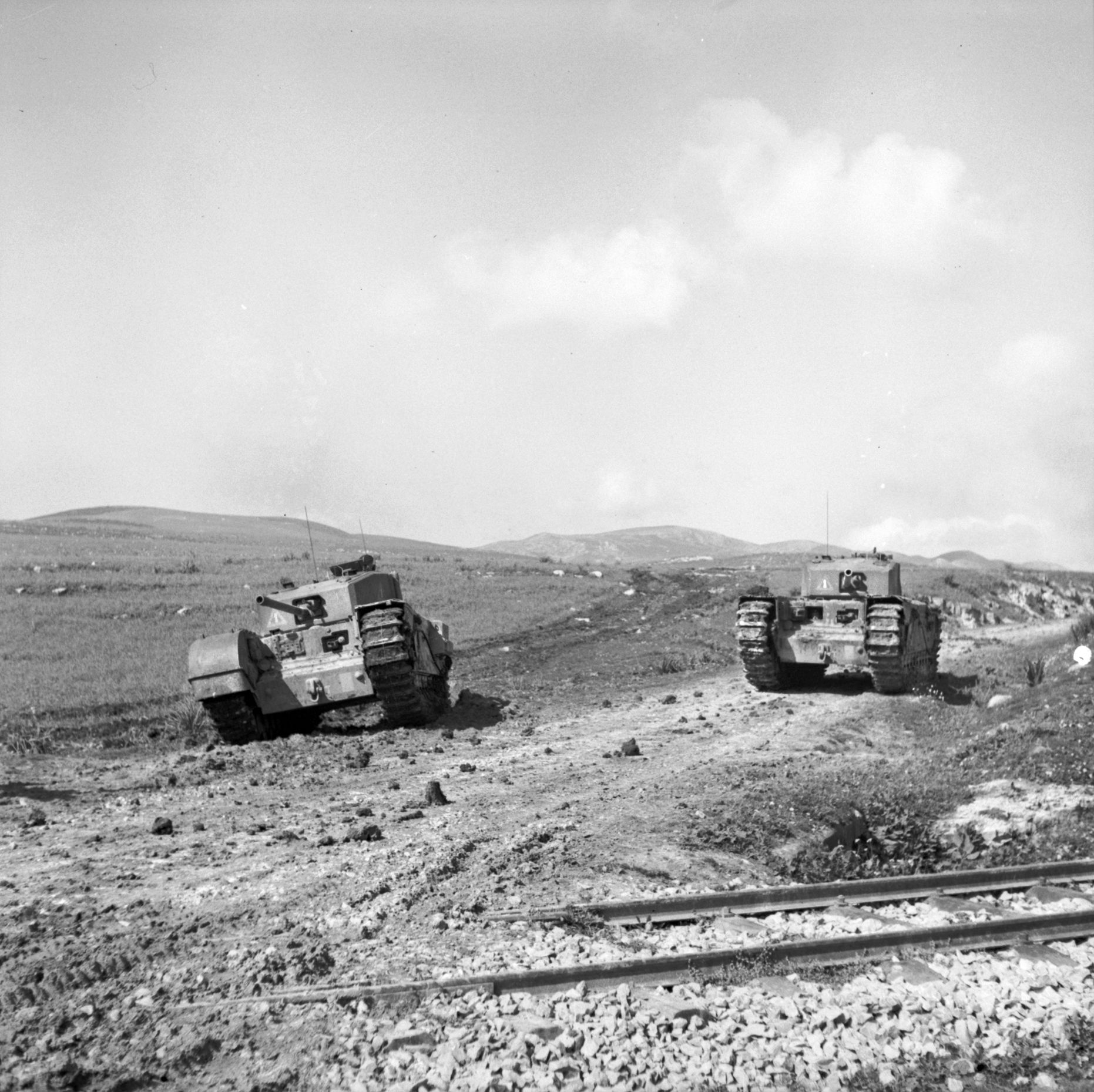
Hollands received the withdrawal order and started back with Renton. Just as they got underway, radio and internal intercom on “Adventure” stopped working entirely. Hollands did not hesitate to get out of his tank and sit on the front hull, giving Mitton driving directions using hand signals the driver could see through his visor. Moving back to the road, they stopped to fire a few armor-piercing rounds at the camouflaged 88mm gun to prevent its later recovery and repair. As they did so, the engine stopped and would not start again. German mortar and machine-gun fire fell around the two British tanks as Renton directed his vehicle around Hollands’ stricken tank. As the crew quickly attached a tow cable, the air filled with mortar shrapnel and machine-gun bullets. The cable in place, Renton climbed aboard his own tank but took a hit as he did so. Despite the wound, he made it back inside his tank and ordered his driver to begin the tow. When Renton’s tank began pulling Adventurer, its engine started and both tanks got underway.
As the two British tanks crawled back to friendly lines, disabled and burning Churchills dotted the landscape. They passed near one of them, flames rising from its hulk. The crew hid nearby. Hollands and Renton took them aboard and kept going. The recently landed enemy paratroopers worked their way through the wadis and attacked the British tankers as they tried to recover the disabled vehicles, so with darkness approaching there was no more which could be done that day. Both tanks were soon back with the rest of A Squadron.
The attack on Steamroller Farm proved costly. A Squadron lost five tanks, three of them total losses and two more abandoned on the field, though they were later recovered after the German withdrawal. Worse, the squadron suffered three dead and 11 wounded.
Hollands and Renton reported on their actions and observations. At first their squadron mates did not believe them, refusing to accept their claims; surely a single tank could not have wrought that much carnage among the enemy, even with the late reinforcement of Renton. Then, a few days later, British infantry took Steamroller Farm after the Germans retreated. They reported even more damage than the two British tank officers claimed.
The area was strewn with German dead and signs of casualties, between 150-200 of them. A total of eight anti-tank guns sat destroyed on the field, including two 88s. The laager area held the remains of 25 wheeled vehicles, and a pair of wrecked mortars lay in their firing pits along with another pair of 20mm antiaircraft guns ruined nearby. At the head of the pass beyond the farm lay the destroyed hulks of two Panzer III tanks. British signalers also intercepted a radio transmission from the local German commander justifying his retreat. The German officer claimed the British sent a “mad tank battalion which scaled impossible heights.” Their attack proved so ferocious it forced his withdrawal.
For his bravery and leadership at Steamroller Farm, Captain Ernest Darrell Hollands received the Distinguished Service Order, at that point awarded only to officers in wartime. The Military Cross went to Lieutenant Renton, and Adventurer driver, Trooper John Mitton, received the Military Medal. Hollands’ war continued until May 22, 1944, when he was wounded in action while his squadron supported the 1st Canadian Division during an assault on the Hitler Line in Italy. He lost his leg as a result but was able to rejoin the Bath Police after his discharge. Upon relinquishing his commission in 1951, he received the honorary rank of major. Hollands retired from the Bath Police service as Inspector of the Traffic Department in 1977.
While the British attack failed to take Steamroller Farm, the stiff fight they gave the Germans prevented any further advance and helped compel their ultimate withdrawal and the failure of Operation Ochsenkopf, a delayed victory of sorts. Repulsing this German attack prevented a delay in the final Allied offensive, which defeated the Germans in North Africa, causing their surrender only two months later.
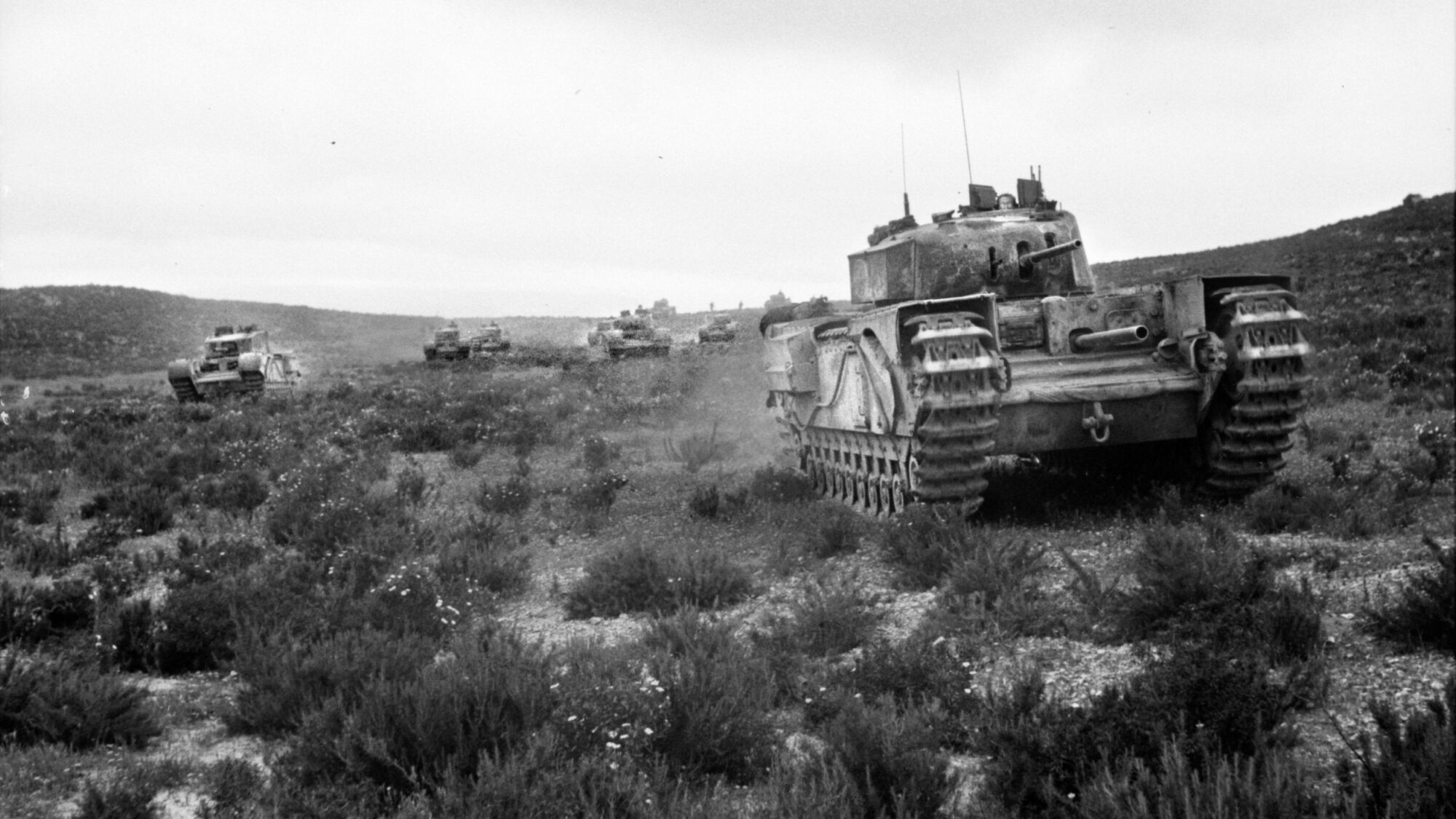
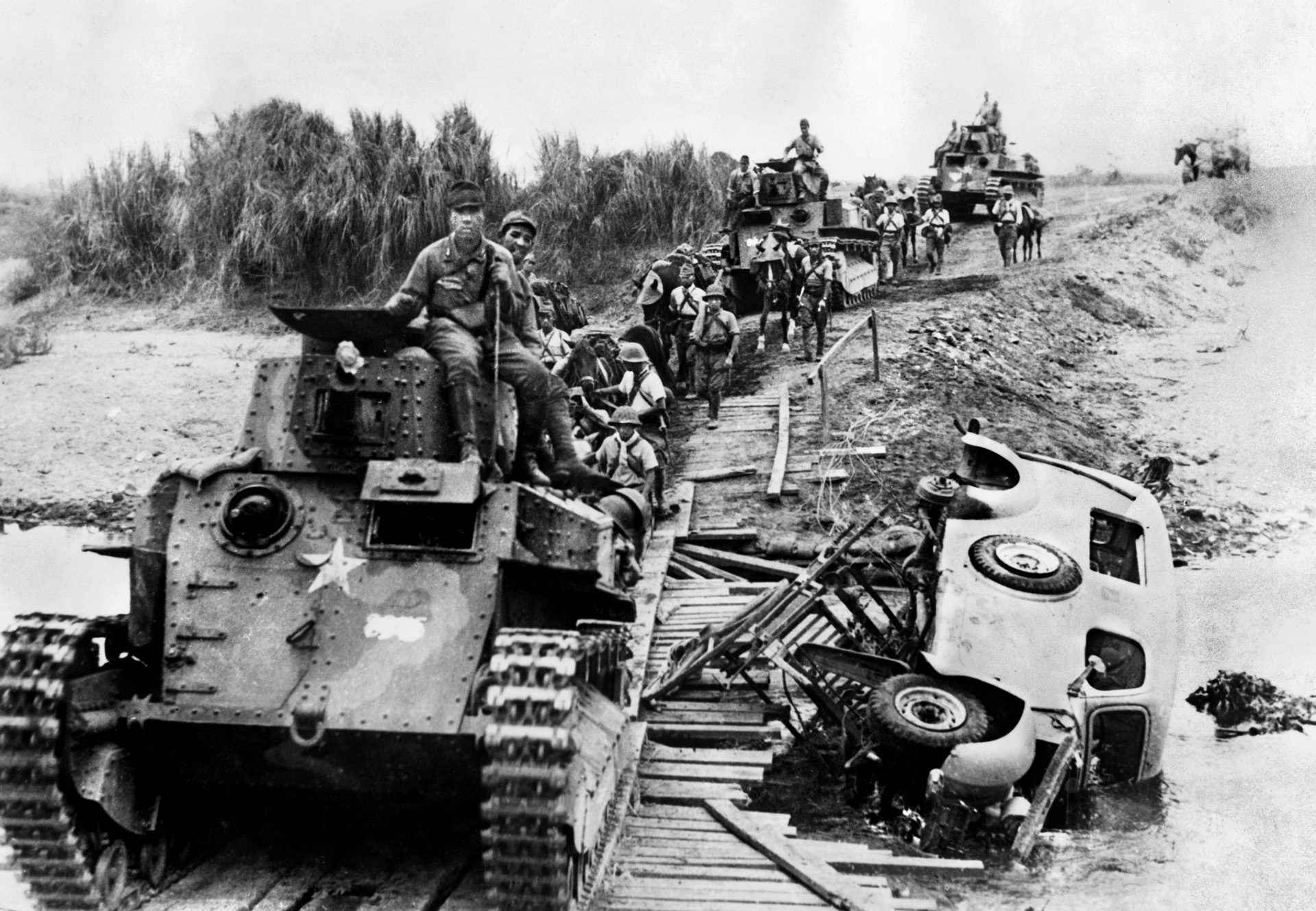
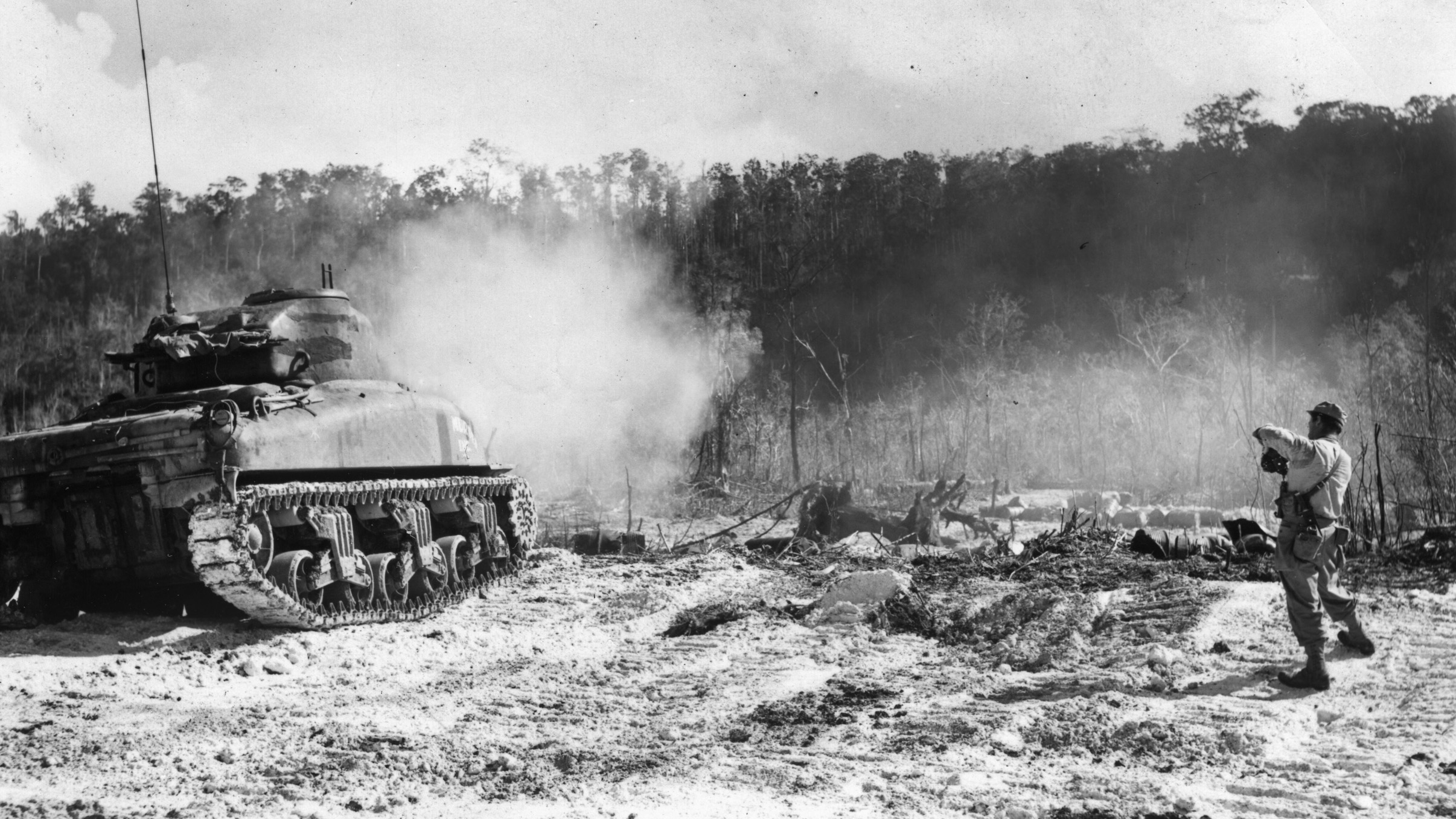
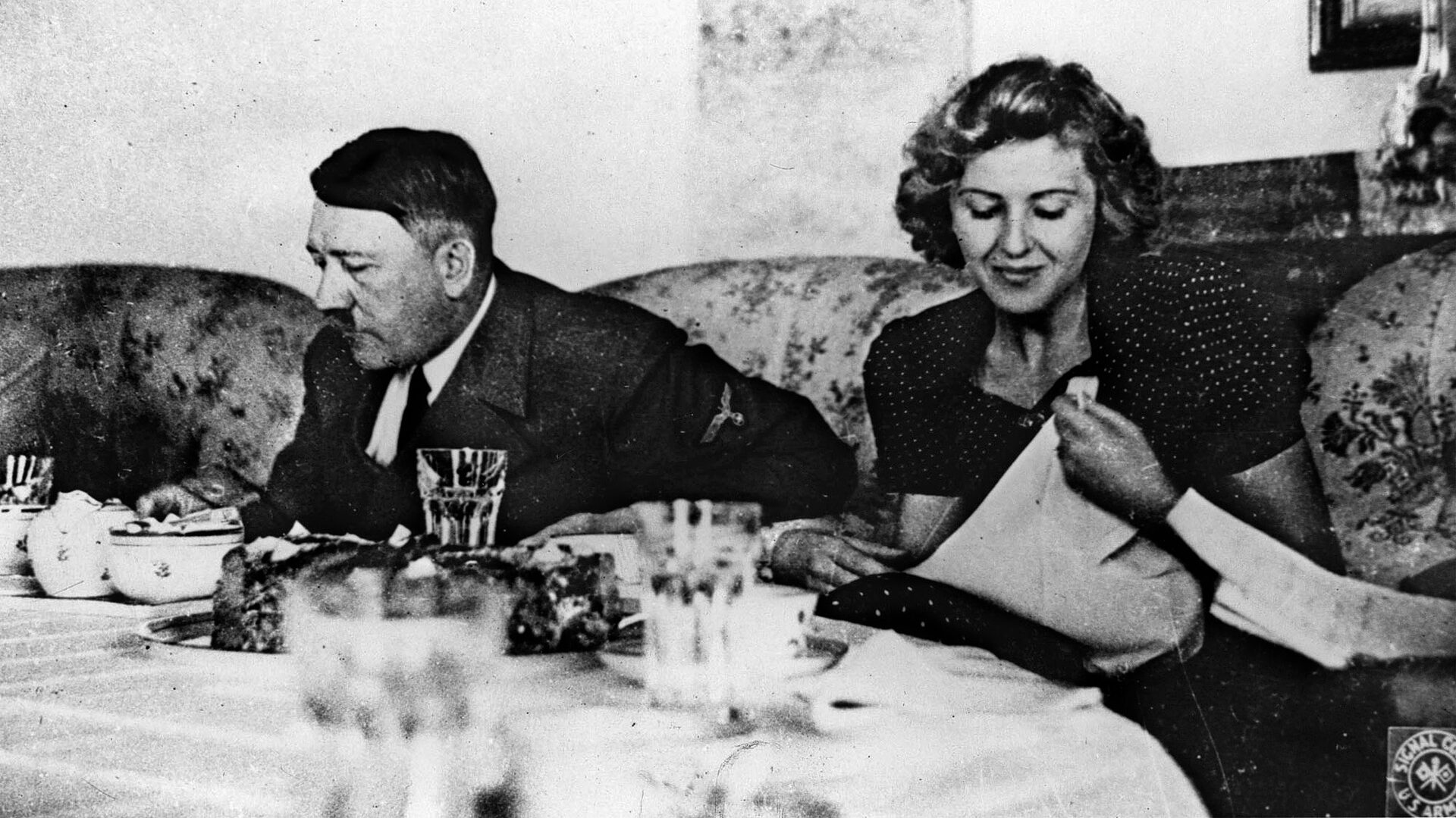
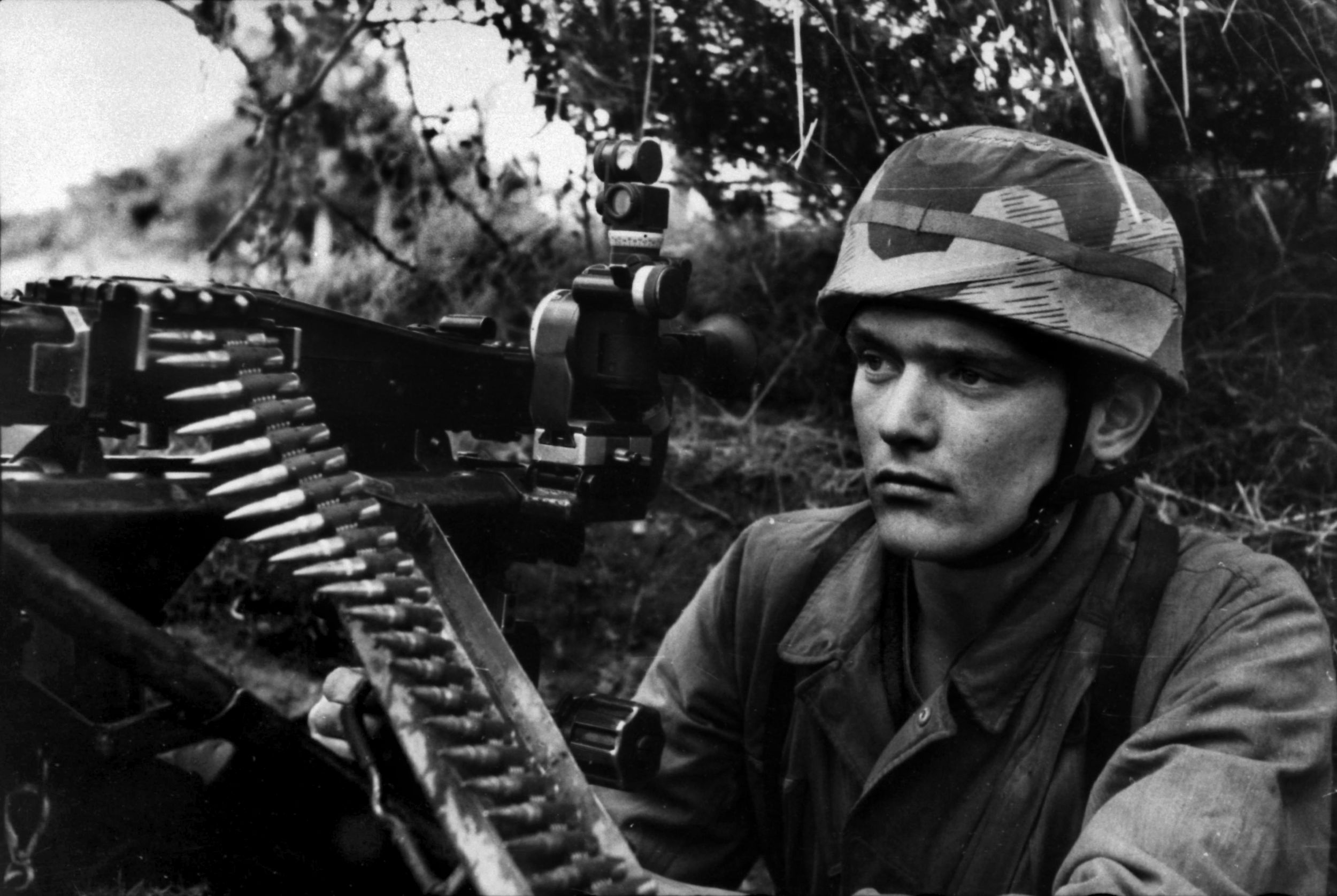
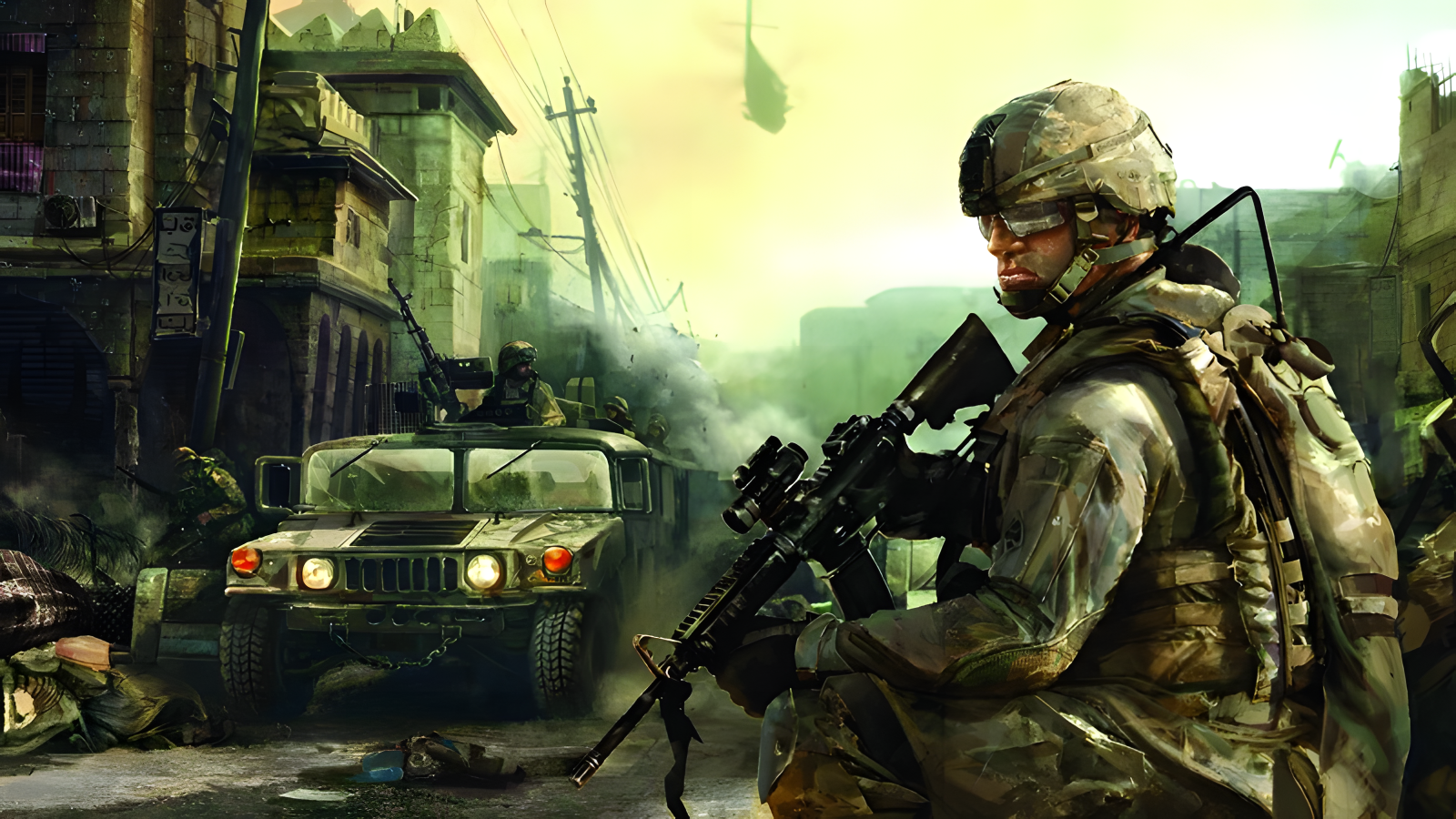
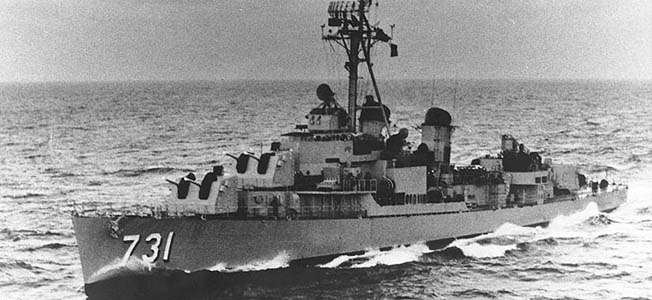
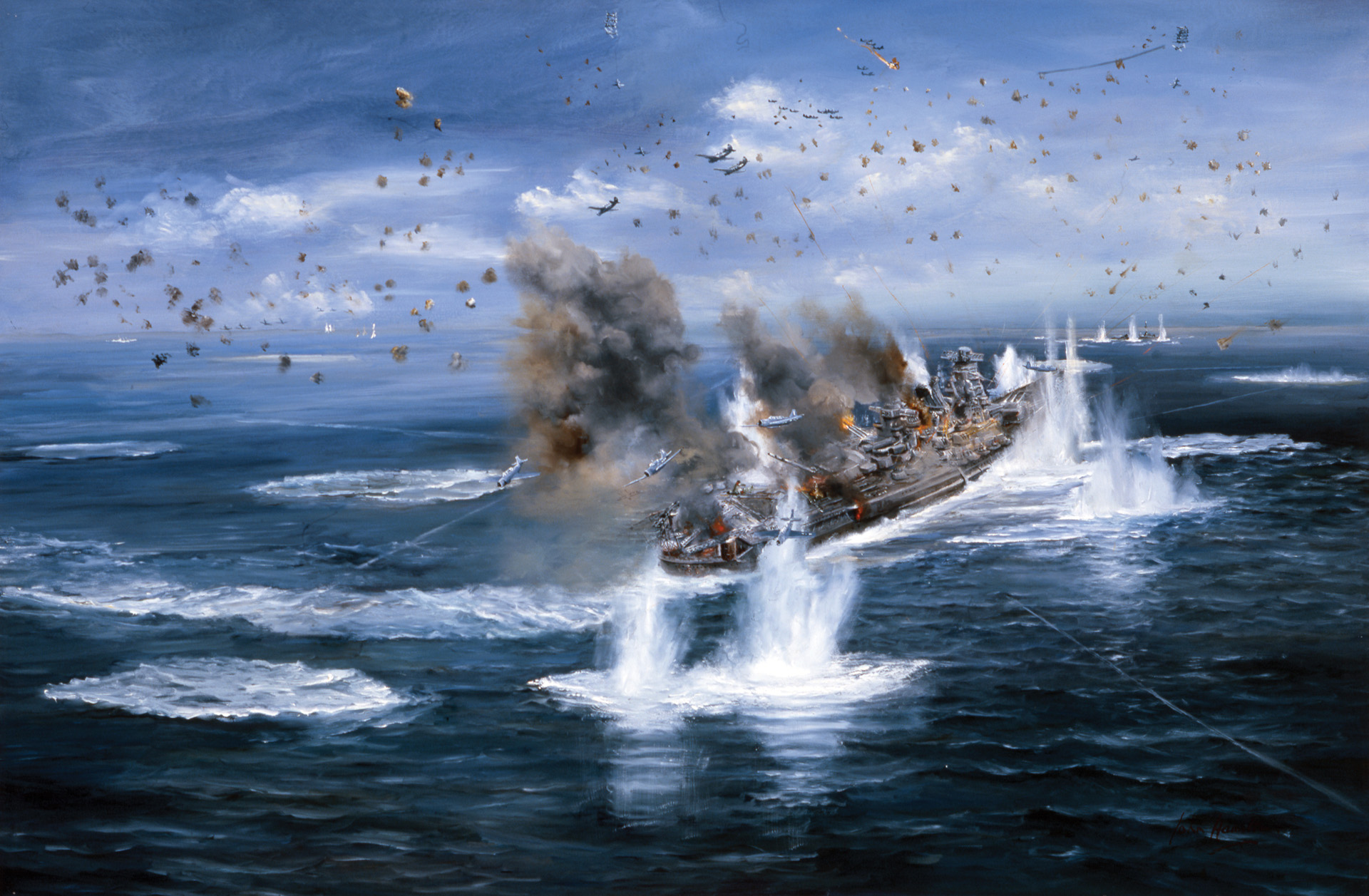
Join The Conversation
Comments
View All Comments